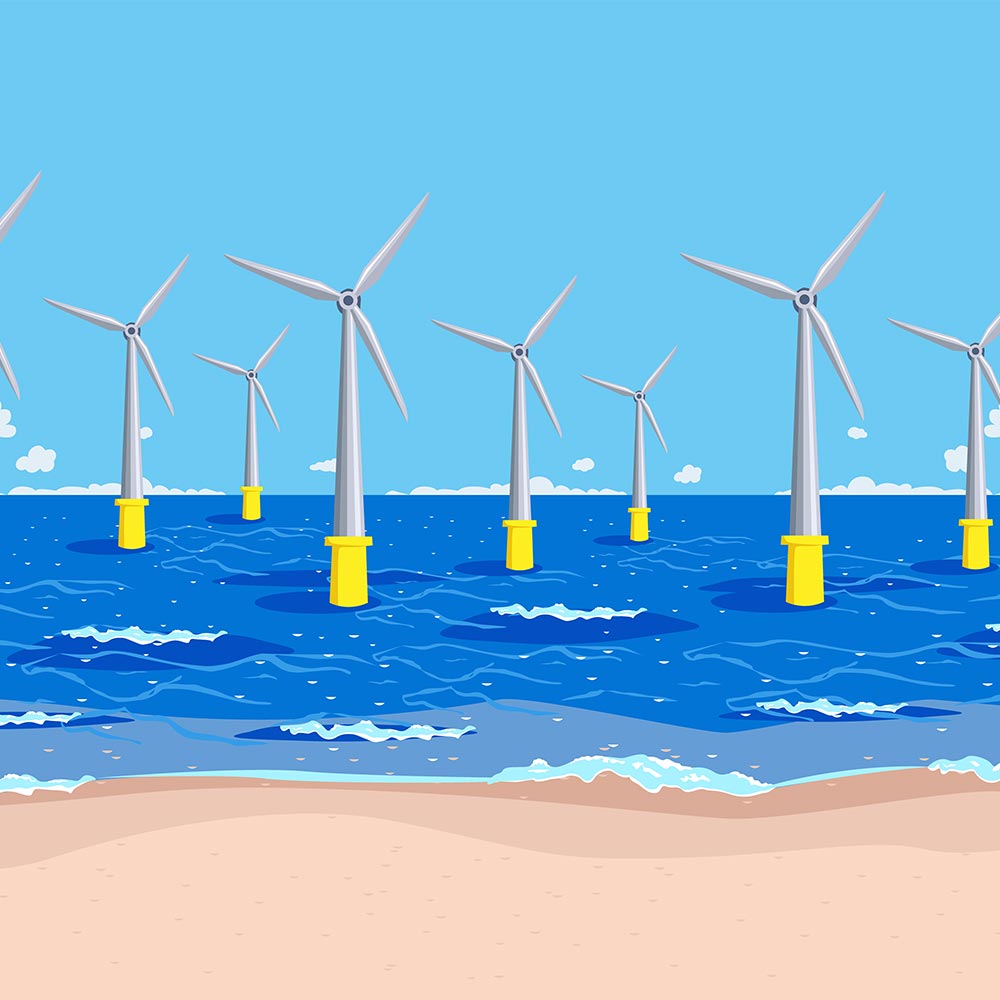As renewable energy becomes firmly established, the focus shifts to optimizing its potential. From employing perovskites to enhance photovoltaic panel efficiency to developing larger wind turbines, numerous strategies are emerging to generate clean energy more effectively. One such strategy focuses not on the technology itself but on the location of the installations. While we’ve previously discussed solar panels installed on reservoirs or offshore wind farms, today we’ll explore a newer concept: nearshore renewable energy.
What this article covers:
What is nearshore renewable energy?
Nearshore renewable energy is a type of offshore renewable energy involving the installation of wind turbines or solar panels in shallow waters, typically less than 15 kilometers from the coast, with solar setups often situated mere meters offshore. This strategic positioning takes advantage of nearshore conditions while mitigating some challenges associated with deeper water installations.
In the case of nearshore wind energy, the kinetic energy of coastal winds is harnessed to generate electricity. Turbines are anchored to the seabed in relatively shallow waters, enabling them to capture stronger, more consistent winds than those available on land. Additionally, their proximity to the shore simplifies maintenance and reduces the complexity of transmitting electricity to the grid.
As for nearshore solar energy, it involves floating solar panels installed in shallow waters. After proving successful in marsh environments, these panels are now being evaluated for use in coastal areas, as detailed later in this article.

Differences between nearshore and offshore renewable energy
Although both involve placing turbines or solar panels over water, nearshore and offshore renewable energy differ significantly, particularly in their distance from the coast and the associated technical and economic challenges.
- Distance from the coast: Nearshore installations are typically within 15 kilometers of the coast, while offshore facilities are situated much farther out. This closer proximity simplifies logistics and reduces transportation costs. Currently, solar panels are only being tested in nearshore setups.
- Water depth: Nearshore systems are located in shallow waters, making foundation construction simpler and less costly. Offshore installations, by contrast, require advanced engineering solutions to anchor turbines in deeper waters.
- Wind conditions: Offshore locations often experience stronger, more consistent winds than nearshore areas. However, nearshore installations still benefit from better wind conditions than land-based systems, offering a practical balance between wind availability and logistical feasibility.
Advantages of nearshore renewable energy
Nearshore renewable energy offers several compelling benefits, making it an appealing option in the push for sustainable energy solutions:
- Cost reduction: Being closer to shore reduces the length and complexity of submarine cables, lowering installation and maintenance costs. Additionally, construction in shallow waters is less technically demanding.
- Simplified logistics: Proximity to land makes it easier to transport materials and personnel, speeding up construction and simplifying maintenance operations. This translates into shorter timelines and reduced operational risks.
- Improved grid integration: The closer location to the coast allows for easier connections to existing power grids, eliminating the need for significant investments in additional infrastructure.
- Controlled environmental impact: Nearshore projects can be designed to minimize harm to marine life and habitats. Their proximity to land also enables more effective monitoring and management of environmental impacts.
A floating solar project in the Maldives
While most current nearshore projects focus on wind energy, there are notable photovoltaic initiatives in similar environments, such as the 2 MWp floating solar power system at the Soneva Secret resort in the Maldives. This project aims to reduce reliance on diesel generators by harnessing solar energy through three 74-meter-diameter floating rings, all without occupying valuable island space.
The installation is engineered to withstand waves over two meters high, ensuring reliable operation in the Maldives’ marine environment. This initiative not only reduces the resort’s carbon footprint but also demonstrates the viability and advantages of integrating renewable energy solutions in nearshore settings.
Conclusion
Nearshore renewable energy strikes a balance between technical feasibility and economic viability, positioning it as a promising alternative in the transition to cleaner energy sources. By leveraging favorable coastal wind conditions while avoiding the complexities of deepwater installations, these projects deliver sustainable energy in an efficient and effective manner.
Innovative projects, like the floating solar system in the Maldives, underscore the potential of nearshore renewable energy and highlight how advancements in this field can cut emissions and foster environmental sustainability.
If you are curious about other forms of clean energy derived from the sea, consider reading about blue energy or salt-gradient power.
Source:



